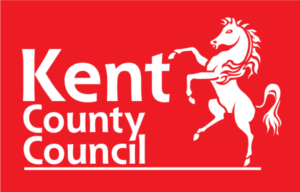Assessing Regional Changes in Habitat (ARCH)
GIS is playing a pivotal role in an EU-funded project to monitor and compare habitat changes in Kent and the Nord-Pas de Calais region of France. Different solutions from Esri’s ArcGIS is being used to facilitate the collection of biodiversity data, analyse survey findings and publish information in a format that is easy to access and understand.
ArcGIS has provided a robust and versatile platform for collecting, collating and analysing a massive three million polygons of habitats data from Kent alone
Using ArcGIS, Kent Council has been able to make its habitat survey findings easy to access and understand, in a variety of online formats
Environmental organisations and local authorities can use the GIS visualisations to inform and influence their conservation and development plans
The Project
The county of Kent in the UK and the Nord-Pas de Calais region of France share the same geological bedrock and consequently have similar woodland, chalk grassland and wetland habitats. With this common natural heritage, it made sense for the two regions to exchange information and expertise to improve the management of the landscape and the conservation of wildlife.
To facilitate this collaboration, an EU-funded project was launched called Assessing Regional Changes in Habitat (ARCH). This cross-border initiative aimed to improve the quality and consistency of habitats data in both regions and then make this data more accessible. On the Kent side of the English Channel, the ARCH project was led by Kent County Council and supported by partners including Kent Wildlife Trust, Kent & Medway Biological Records Centre, the Environment Agency and six district councils.
We were convinced that online interactive web maps would give us an effective and standard platform for exchanging knowledge with people in both the UK and France
William Moreno – Senior Biodiversity Projects Manager at Kent County Council
The Challenges
One initial concern was that the ARCH project would generate a vast amount of data. New survey methods meant that the volume of data collected would be far greater than that amassed ten years before in the 2003 Kent Habitats survey.
Another pivotal challenge was how to share the ARCH survey data with large numbers of organisations and individuals on both sides of the Channel – and ensure that the habitats data was easy for everyone to understand and use. Early in the project, the cross-border team concluded that maps were the answer. William Moreno, Senior Biodiversity Projects Manager at Kent County Council says: “We were convinced that online interactive web maps would give us an effective and standard platform for exchanging knowledge with people in both the UK and France.”
Because of the council’s legacy of using Esri GIS, we knew that we could trust it to handle the significant amount of data that would be generated by the ARCH project, and then publish it online
Peter Wain – Business Development Officer at KentGIS
The Solution
Kent County Council has a twenty-year history of using geographic information system (GIS) technology from Esri to capture, display and analyse information on digital maps. Indeed it had used Esri GIS for its previous habitat surveys. Peter Wain, Business Development Officer at KentGIS says: “Because of the council’s legacy of using Esri GIS, we knew that we could trust it to handle the significant amount of data that would be generated by the ARCH project, and then publish it online.”
Kent County Council used Esri’s ArcGIS Desktop solution and tablet computers to facilitate data collection in the field and then consolidated this field data with aerial and imagery. It analysed the survey data in Esri’s ArcGIS Desktop solution and published it via Esri’s ArcGIS Server solution in two ways. Firstly, using Esri UK’s LocalView Fusion product, the ARCH team made survey data available to experienced GIS users in a format they could navigate and interrogate. Secondly, the ARCH team developed specific maps, highlighting key findings, and published them using Esri’s ArcGIS Online. An online Map Portal hosted in ArcGIS Online was created which pulled all these web map applications and data services together.
In what was a critical aspect of the project, the ARCH team in Kent worked in parallel with partners in Calais to develop a common habitat classification system. As a result, all the data collected in the UK and France is directly comparable and presented in a standardised format on all ARCH maps, which facilitates comparative analysis.
GIS shows us more than just a snapshot in time; it enables us to make comparisons and show geographical and temporal change, and this insight is very valuable
Peter Wain – Business Development Officer at KentGIS
The Benefits
The suite of GIS solutions from Esri UK has provided Kent County Council with a robust and versatile platform for collecting, collating and analysing substantially more habitats information than ever before. For the 3,918 km2 Kent region alone, the ARCH team compiled a staggering 3 million polygons of data, compared to 160,000 polygons in 2003.
Esri’s GIS platform has added greatest value to the ARCH project by making biodiversity data highly accessible. Local authorities, environmental groups, research bodies, schools and individuals can visit a range of different web sites or the council’s LocalView portal to access interactive maps that help them truly understand habitats data. GIS-savvy organisations can also download the survey data via web-services and integrate it with their own business data to gain added insight into environmental and development issues.
Environmental organisations now have easy access to up-to-date habitats information that they can use to inform conservation work. For example, Kent Wildlife Trust is expected to use the GIS-based survey results to identify areas that are suitable for designation as Local Wildlife Sites. French organisations can also view the data from Kent and, thanks to the common classification system, they can make useful landscape and habitat comparisons.
In addition, land cover data has been derived from the habitat data and the GIS-based survey results are expected to deliver substantial benefits for development planning across Kent. The ARCH team has, for instance, developed an online map showing that developed land has increased by 62% over the last 50 years. “GIS helps us to provide evidence to policy makers about development and where land cover change has occurred within Kent,” says Wain. “GIS shows us more than just a snapshot in time; it enables us to make comparisons and show geographical and temporal change, and this insight is very valuable.”



